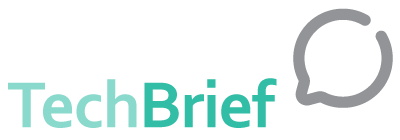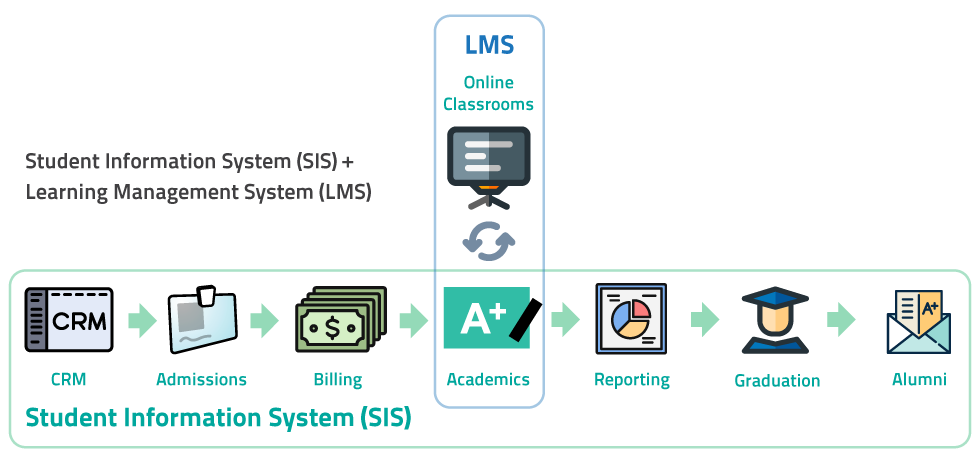
LMS or SIS? What's the Difference and Do I Need Both?
When we start discussing education technology options with new customers, many times we find confusion in what exactly a Learning Management System (LMS) and Student Information System (SIS) do and how they fill the customer's needs.
In this brief we will look at both technologies and learn how they integrate together to provide a complete solution to successfully run a learning institution.
What is a Learning Management System (LMS) and How Does it Differ from an SIS?
A Learning Management System (LMS) is a software platform used to deliver, manage, track and report educational or training programs. It provides an organized centralized framework for instructors and institutions to create and deliver content, monitor student engagement and assess performance. LMS platforms are widely used in both educational and corporate environments to facilitate online learning, support blended learning models and enhance traditional classroom instruction.
In a nutshell, an LMS provides the platform to conduct online and hybrid classrooms and learning.

- Course Management: Creating, managing, and delivering courses and educational content, including lessons, quizzes, and assignments.
- User Management: Managing user roles and permissions, including students, instructors, and administrators.
- Content Delivery: Distributing educational materials such as videos, readings, and interactive activities.
- Assessment and Evaluation: Providing tools for creating and grading quizzes, tests, assignments, and exams.
- Tracking and Reporting: Monitoring learner progress, participation, and performance through detailed analytics and reporting features.
- Communication and Collaboration: Facilitating interaction between learners and instructors through forums, chat rooms, messaging, and video conferencing.
- Integration: Integrating with other systems and tools such as Student Information Systems (SIS), content authoring tools, and third-party applications.
- Customization: Allowing for customization to meet the specific needs of different educational institutions or training programs.
- Mobile Access: Enabling access to learning materials and activities through mobile devices for flexibility and convenience.
- Enrollment and Registration: Managing the process of student admission, including applications, acceptance, and course registration.
- Financial Management: Although many LMSes provide online purchase and payment of course individual courses, generally they do not provide a complete tuition billing, payment or financial aid processing.
- Attendance Tracking: Recording and monitoring student attendance in classes and other school-related activities.
- Reporting and Analytics: Many LMSes provide reporting related to student learning progress and grading, but do not provide a reporting solution for admissions, financial, billing and post-learning activities.
- Compliance: Ensuring the institution complies with government regulations and accreditation requirements by maintaining accurate and up-to-date student and school records.
What is a Student Information System?
A Student Information System (SIS) is a software platform that educational institutions use to manage student data, admission / enrollment processes, academic records and various administrative tasks. It serves as a centralized database for information related to students, faculty and courses. An SIS follows the student's entire educational journey from prospect to admissions to academics to graduation.

- Enrollment and Registration: Managing the process of student admission, including applications, acceptance, and course registration.
- Attendance Tracking: Recording and monitoring student attendance in classes and other school-related activities.
- Grade Management: Storing and processing grades and transcripts, and providing tools for teachers to input and calculate grades.
- Scheduling: Creating and managing class schedules, including assigning classrooms and instructors.
- Communication: Facilitating communication between students, teachers, parents, and administrative staff through emails, notifications, and announcements.
- Financial Management: Handling billing, tuition payments, and financial aid information.
- Reporting and Analytics: Generating reports on various aspects of student performance, attendance, and other metrics to help administrators make informed decisions.
- Compliance: Ensuring the institution complies with government regulations and accreditation requirements by maintaining accurate and up-to-date student and school records.
- LMS Integration: Generally, an SIS provides little or no LMS capabilities by itself. Instead an SIS will likely provide integration options with the most popular LMSes.
- Course Management: Creating, managing, and delivering courses and educational content, including lessons, quizzes, and assignments.
- Content Delivery: Distributing educational materials such as videos, readings, and interactive activities.
- Assessment and Evaluation: Providing tools for creating and grading quizzes, tests, assignments, and exams.
So Do I Need Both for My Learning Institution?
The answer to this question depends on the learning activities your institution offers:
You will need an SIS if,
✓ You need to manage the admissions, application and enrollment processes of your students.
✓ You need to manage the financial process (e.g. tuition and billing) of your institution.
✓ You need to a complete grading and/or attendance tracking solution.
✓ You will a solution to schedule classrooms, teachers and students.
✓ You will be seeking Title IV or compliance through accreditation.
You will need an LMS if,
✓ You will provide programs or individual courses online.
✓ You will conduct online coaching engagements.
Need Help Getting Started on Your LMS or SIS Journey? Let Us Help.
Our CorCloud Learn™ platform provides a comprehensive cloud-based edtech platform and integrated support team.
We take care of all aspects of your learning technology--freeing up you and your staff to do what you do best: providing the best educational experience to your students.


